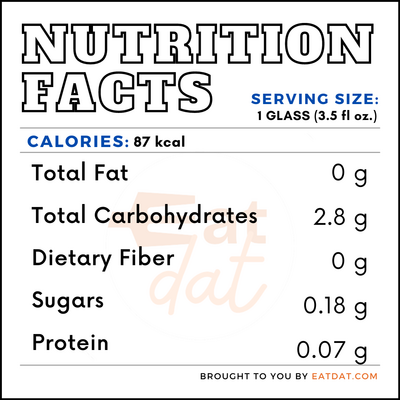
Champagne
also known as Sparkling Wine
What is Champagne?
Champagne is a carbonated wine. This sparkling wine is sometimes produced in other parts of the world with grapes from this French region. The grapes used for producing this alcoholic beverage must originate from the Champagne region and are limited to:
- Pinot noir
- Meunier
- Chardonnay varieties
This wine is produced under the rules of the appellation. The world’s top consumer of this sparkling wine is France, followed by the UK and the USA. In 2018, France produced 301.9 million bottles of this alcoholic beverage
The top 10 best selling champagne brands in the US, according to Statista are:
- La Marca
- Korbel
- Cook’s
- Barefoot Bubbly
- Andre
- Veuve Clicquot Ponsardin
- Cupcake Vineyards
- Ruffino
- Stella Rosa
- Chandon
Origin of champagne
Fermented drinks made from fruit, rice, and honey date back to 7,000 BC – 6,500 BC in Ancient China. However, Armenia holds claim to the oldest known winery, which had ancient winemaking vessels from 4,100 BC. Historians also believe that wine was central to Egyptians culture because it was discovered in the tombs of pharaohs. Later on, traders from Phoenecia would transport wine and grapevines to the Mediterranean, where they became very popular.
Sparkling wine and champagne first got their start in the vineyards of French monasteries in 496 AD. This alcoholic beverage would become so important that by 898 AD all French kings would be crowned in Reims, Champagne. By the 12th century, the sparkling wine had become well-known outside of France. Although it wasn’t until the late 1600s that this was produced in this famed region would begin to be respected. Since then, the technology to produce this alcoholic beverage has evolved immensely but its importance in French culture hasn’t wavered.
Function
Champagne can be enjoyed on its own or used to craft some iconic cocktails. Recently, this sparkling wine has also become very popular in the world of baking. Similar to any wine, this alcoholic beverage can be used to marinate meats or vegetables, add tartness to desserts, or give contrast to soups and sauces.
Nutrition
A 3.5 fl oz glass can contain:

While this alcoholic beverage does have trace amounts of calcium, iron, and potassium, it is not a good source of nutrients. As with all types of alcohol, champagne should be consumed responsibly and in moderation. Although moderate consumption of alcohol may have some health benefits, excessive consumption can lead to heart problems, cirrhosis, and cancer.
Commercial production
The commercial production is heavily regulated, from the grapes that can be used to how the vines are pruned, picked, pressed, and fermented. First, grapes are harvested and aerated before they are crushed and the juice is filtered. All skins and pulp are removed from the juice to avoid any changes in flavor. Vintage sparkling wine is fermented in old oak barrels, while non-vintage variations are produced in stainless steel tanks. Then, the grape juice is fermented by adding yeast to the barrels or tanks to convert the sugar into alcohol over a period of 10 days.
After the first fermentation, the resulting wine is blended with other variations to achieve the desired flavor, then it is bottled with yeast and sugar for further fermentation. Following the second fermentation, the bottles are turned upside down (to create the bubbles) and left to age for up to ten years. Once the champagne is aged, it is inspected for quality before it is sweetened to either a brut, sec or demi-sec level. Finally, the champagne bottles are corked, capped, labeled, and stored until they are ready to be shipped off.
Uses
Much like wine, this can come to taste better with age; however, storing it correctly will ensure that it lasts long enough to be fully enjoyed. This alcoholic beverage should always be stored far bright or artificial light and kept consistently cool at a temperature of 45°C – 50°C. It’s also best to avoid big changes in temperature. If you are storing this alcoholic beverage for a short time, it’s fine to leave it standing up. Although if you are planning to store it for a longer period, it’s best to store the bottle on its side to keep the cork from drying out.
Champagne recipes
Sparkling wine can be used to craft light and bubbly cocktails or give a delicate flavor to sweets. Here are some popular recipes:
FDA Regulation
The Alcohol, Tobacco Tax, and Trade Bureau defines champagne as “sparkling light grape wine that derives its effervescence solely from secondary fermentation within glass containers of not greater than one-gallon capacity.” The TTB goes on to stipulate that this alcoholic beverage must be produced in France unless it has been grandfathered. The Food & Drug Administration also strictly regulates the use of the term “champagne” on product labeling. The FDA does not approve of this term for usage on artificially carbonated grape juice, soda water, or artificially carbonated sweet cider.
References
“Wine: Beverage.” Truefoodfact.com, True Food Fact, 22 June 2020, truefoodfact.com/beverage/wine/.
“History of Champagne Wine.” Champagne.fr, Comité Champagne, www.champagne.fr/en/from-vine-to-wine/what-is-champagne-wine/history-of-champagne-wine.
Barksdale, Nate. “Champagne: A Bubbly History.” History.com, A&E Television Networks, 31 Dec. 2014, www.history.com/news/champagne-a-bubbly-history.
“The Beverage Alcohol Manual.” Ttb.gov, Department of the Treasury Alcohol, Tobacco Tax and Trade Bureau, www.ttb.gov/images/pdfs/wine_bam/complete-wine-beverage-alcohol-manual.pdf.
